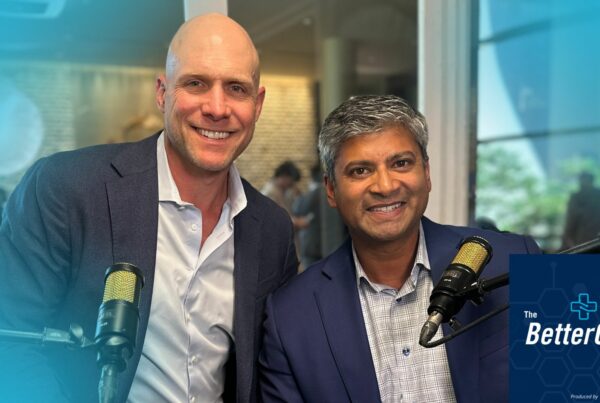Hospital length of stay (LOS) is a critical operational and clinical metric that directly impacts cost, patient flow, and care access. For safety-net hospitals (public hospitals that provide care regardless of a patient’s ability to pay, often serving a high proportion of Medicaid and uninsured patients), where demand regularly outpaces capacity, reducing LOS can be the key to improving access and maintaining financial sustainability.
This blog highlights the journey of Denver Health—a public safety-net system in Colorado—as a leading example of how hospitals can move the needle on LOS. Facing systemic constraints and an LOS index that ran 15–20% higher than expected, Denver Health launched a cross-functional improvement effort grounded in data, frontline engagement, and executive leadership.
At the center of this effort was Dr. Walker Keach, Medical Director of Hospital Care Management and Patient Flow, who led this initiative at Denver Health with his research colleagues. The initiative ultimately delivered measurable and sustainable improvements in LOS without increasing readmissions.
These insights are drawn from my interview with Dr. Walker Keach’s on The Better Care Podcast, where he discussed the research and methods behind his LOS improvement study, titled “Reducing Hospital Length of Stay: A Multimodal Perspective Quality Improvement Intervention” which was published in the Joint Commission Journal on Quality and Patient Safety. This article outlines exactly how they did it.
Some quotes have been lightly edited for clarity and brevity.
Ep 27 – The 100-Day Challenge to Reduce Hospital LOS – Dr. Walker Keach (Denver Health)
Key Definitions
Before diving into the tactics, let’s define some key terms and metrics referenced throughout this blog:
-
- Length of Stay (LOS) Index: A normalization metric calculated as actual LOS divided by expected LOS.
- DRG (Diagnosis-Related Group): A classification that groups patients with similar clinical conditions and resource needs. Common types:
- MS-DRG: Medicare Severity DRG, often used for Medicare/commercial patients
- APR-DRG: All Patient Refined DRG, typically used for Medicaid
Read our blog for a deeper dive on DRGs and their impact on hospitals.
-
- GMLOS (Geometric Mean LOS): A benchmark that uses a multiplicative average to reduce the effect of outliers. It reflects the typical length of stay for most patients and is especially useful when data is skewed.
- Arithmetic Mean LOS: A simple average calculated by dividing total length of stay by the number of patients. This method is more sensitive to patients with unusually long stays.
Read our blog for a deeper dive on GMLOS and ALOS.
Step 1: Identify the LOS Problem
Before launching any interventions, Dr. Keach and his team had to validate that Denver Health’s LOS truly exceeded expectations. Many staff believed longer stays were justified due to the hospital’s complex patient population. To challenge that assumption, the team built a customized internal LOS index using actual LOS divided by expected LOS derived from MS-DRGs and APR-DRGs.
This internal benchmarking effort revealed that their LOS index consistently ranged from 1.15 to 1.2—even after adjusting for patient complexity and comparing against peer safety-net hospitals. That meant patients were staying 15–20% longer than expected.
“We’d hear, ‘Our patients are just more complex.’ But once we looked at the normalized data by DRG and payer type, we saw we were still keeping patients longer than average—and longer than other safety-net hospitals.” – Dr. Keach
These findings triggered deeper examination and galvanized support for a systemwide improvement effort.
Step 2: Create Urgency and Assign Accountability
Two months after Dr. Keach stepped into his role as Medical Director of Hospital Care Management and Patient Flow, Denver Health’s CEO issued a 100-day challenge to reduce LOS significantly.
This top-down mandate created immediate urgency and made LOS a systemwide priority. Keach partnered with operations manager Mara Prandi-Abrams to form a dyad leadership structure—clinical and operational leaders jointly accountable for results.
“Having the CEO frame it as a 100-day challenge elevated this from a routine improvement effort to a top priority across departments. It gave us the mandate to align everyone quickly and decisively.” – Dr. Keach
Step 3: Build a Custom Data Infrastructure
Off-the-shelf analytics platforms from their EHR system and Vizient weren’t granular or timely enough for Denver Health. They often provided data that was delayed by several weeks or aggregated at the service line level, which made it difficult to pinpoint actionable issues or analyze trends in real time by individual provider, DRG, or discharge unit.
So Denver Health’s internal analytics team built a custom data pipeline. This consisted of:
-
- Daily uploads to a Tableau dashboard
- 100+ data elements per patient, including diagnosis, discharge team, housing status, social risk factors, etc.
- Filters for specific DRGs, floors, teams, and discharge timings
This infrastructure enabled real-time process improvement, not retrospective reporting.
“I think our internal analytics team might have been the linchpin—the special sauce that really helped us get going. We have a phenomenal data analytics and data warehouse team. Their ability to build tools that gave us patient-level, real-time visibility made all the difference. – Dr. Keach
Step 4: Identify High-Impact Targets
Instead of chasing extreme outliers, Denver Health focused on the “meaty middle”: DRGs with high volume and slightly elevated LOS index. These were conditions where even modest improvements could yield significant systemwide gains.
To prioritize their efforts, the team developed an internal opportunity score—a composite measure that combined volume, LOS deviation, and team readiness to act. This scoring system helped identify areas like sepsis and obstetrics as high-impact opportunities and guided focused improvement workstreams.
Guided by their opportunity score and focused on high-volume, moderately elevated DRGs, Denver Health prioritized efforts in three specific clinical areas:
-
- Sepsis
- Obstetrics
- Psychiatry
Step 5: Empower Frontline Teams to Diagnose Root Causes
Using lean methodology and A3 thinking, each working group tackled one area. Teams conducted:
-
- Gemba walks
- 5 Whys analysis
- Direct input from nurses, physicians, care managers, lactation consultants, and more
This hands-on approach enabled teams to move beyond theoretical barriers and uncover root causes grounded in day-to-day practice.
“It was those conversations with frontline staff where the really interesting stuff came out—like a process delay that wasn’t obvious in the data, or a workflow issue we wouldn’t have spotted otherwise.” – Dr. Keach
In obstetrics, for example, staff flagged a specific issue: no overnight lactation support. Tableau data confirmed the trend—babies born overnight had longer LOS due to delayed lactation consults. This clear link between staff insight and data validation helped build momentum and support for targeted interventions.
Download our guide to the A3 framework here.
Step 6: Test and Scale Interventions
Before launching the pilot, the team tested qualitative observations from frontline staff against the hospital’s internal data. Every hypothesis was evaluated for alignment with patient-level metrics in Tableau. For example, when staff suggested that delays in lactation support might be extending stays for newborns and mothers, the data confirmed it: babies born overnight had significantly longer LOS.
With grant funding, the team piloted 24/7 lactation consultant coverage for 28 days. The result? A significant drop in LOS for vaginal deliveries.
That evidence convinced leadership to fund permanent FTEs. Other targeted changes included faster PT evaluations, streamlined discharge planning, and improved transitions of care.
Addressing the Readmissions Concern
One of the most common concerns surrounding LOS reduction efforts is the potential for increased readmissions. Providers often worry that discharging patients earlier might lead to incomplete treatment or premature transitions, risking patient outcomes and reimbursement penalties.
At Denver Health, this concern was anticipated and closely monitored. Throughout the intervention, Dr. Keach and his team tracked both 7-day and 30-day readmission rates alongside LOS.
“We found that our readmissions were completely flat—30 days and 7 days—over the entire intervention period.” – Dr. Keach
This data reassured providers and leaders that improved efficiency did not come at the cost of quality. Additionally, supporting initiatives like improved discharge planning, better follow-up access, and care coordination played a role in maintaining stable readmission rates while LOS declined.
How Technology Can Support LOS Improvement
Denver Health’s results underscore what’s possible when data, frontline engagement, and leadership alignment converge. But for many hospitals, the challenge is not knowing what to do—it’s having the infrastructure to do it consistently and at scale.
If your organization is looking to reduce LOS using technology, platforms like CareGauge can support that effort. By delivering real-time, DRG-specific LOS data, CareGauge enables frontline teams and leadership to identify delays, benchmark performance, and take action. With tools built to support daily management and multidisciplinary collaboration, it helps operationalize the kind of improvements demonstrated at Denver Health.
Download our research to learn how you can reduce LOS and care variation with CareGauge.
Key Takeaways for Health Systems
Dr. Keach’s success at Denver Health is one that many health systems can learn from. Here are some key takeaways:
-
- Get granular with your data: Static dashboards often lack the specificity needed to drive real-time improvement.
- Prioritize top-down leadership and systemwide buy-in: LOS improvement initiatives gain momentum when leadership across the organization is aligned. Denver Health’s success was catalyzed by a clear directive from the CEO and reinforced by executive-level commitment from operations, nursing, and clinical leadership.
- Engage the frontlines: Solutions are most effective when they come from those closest to the problem. Denver Health relied on nurses, physicians, and other bedside staff to flag process delays. These qualitative insights were then tested against quantitative data to validate interventions.
- Start where the volume is: Rather than chase extreme outliers, focus on high-volume DRGs with moderate LOS elevation.
- Make it a win for everyone: Sustainable change happens when interventions improve workflow for both staff and patients. The 24/7 lactation consultant initiative, for example, eased the workload for nurses, supported new mothers, and reduced LOS. Win-win solutions see higher adoption and better results.
To watch or listen to the full episode, check out Episode 27 of The Better Care Podcast.










